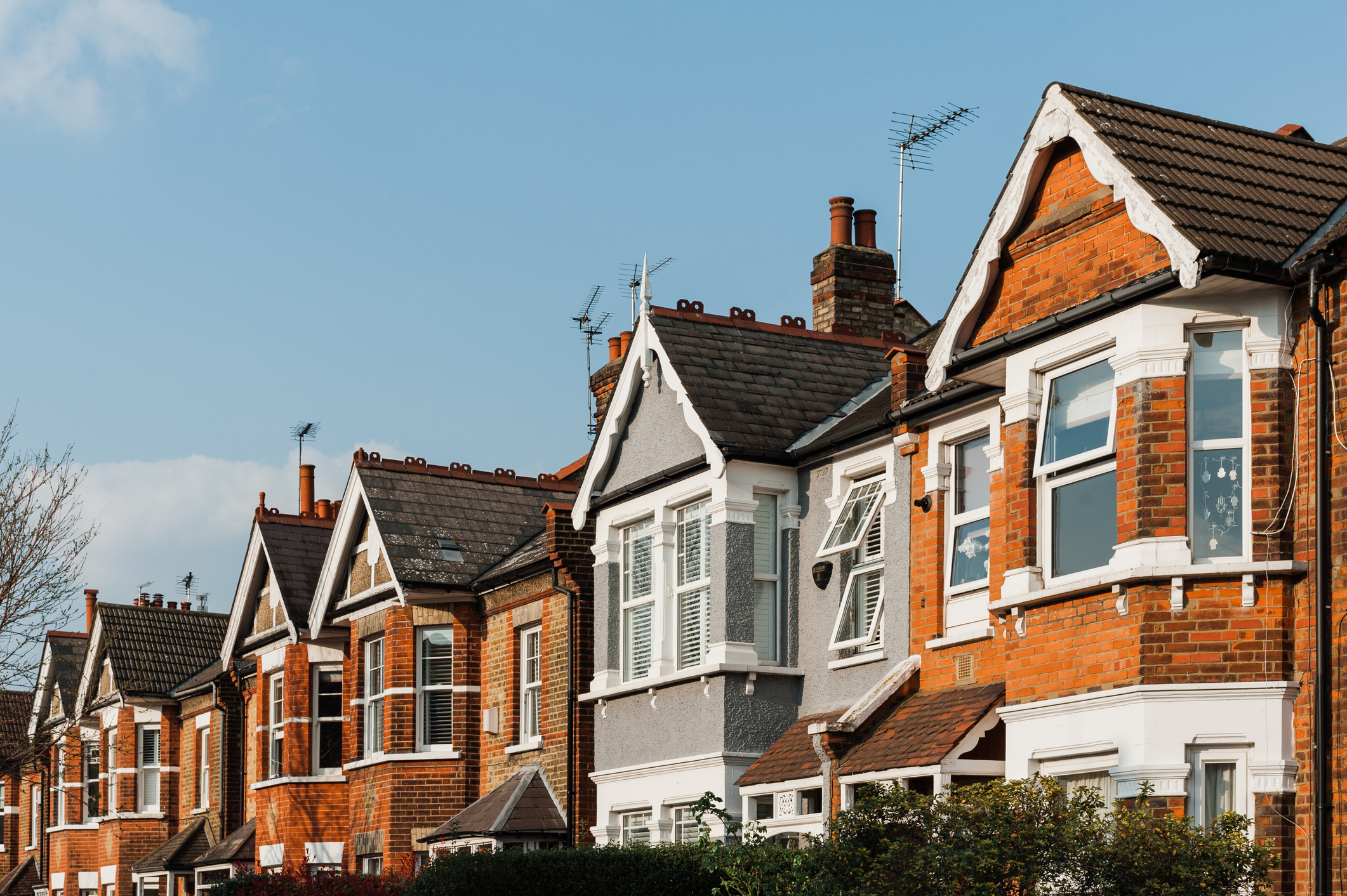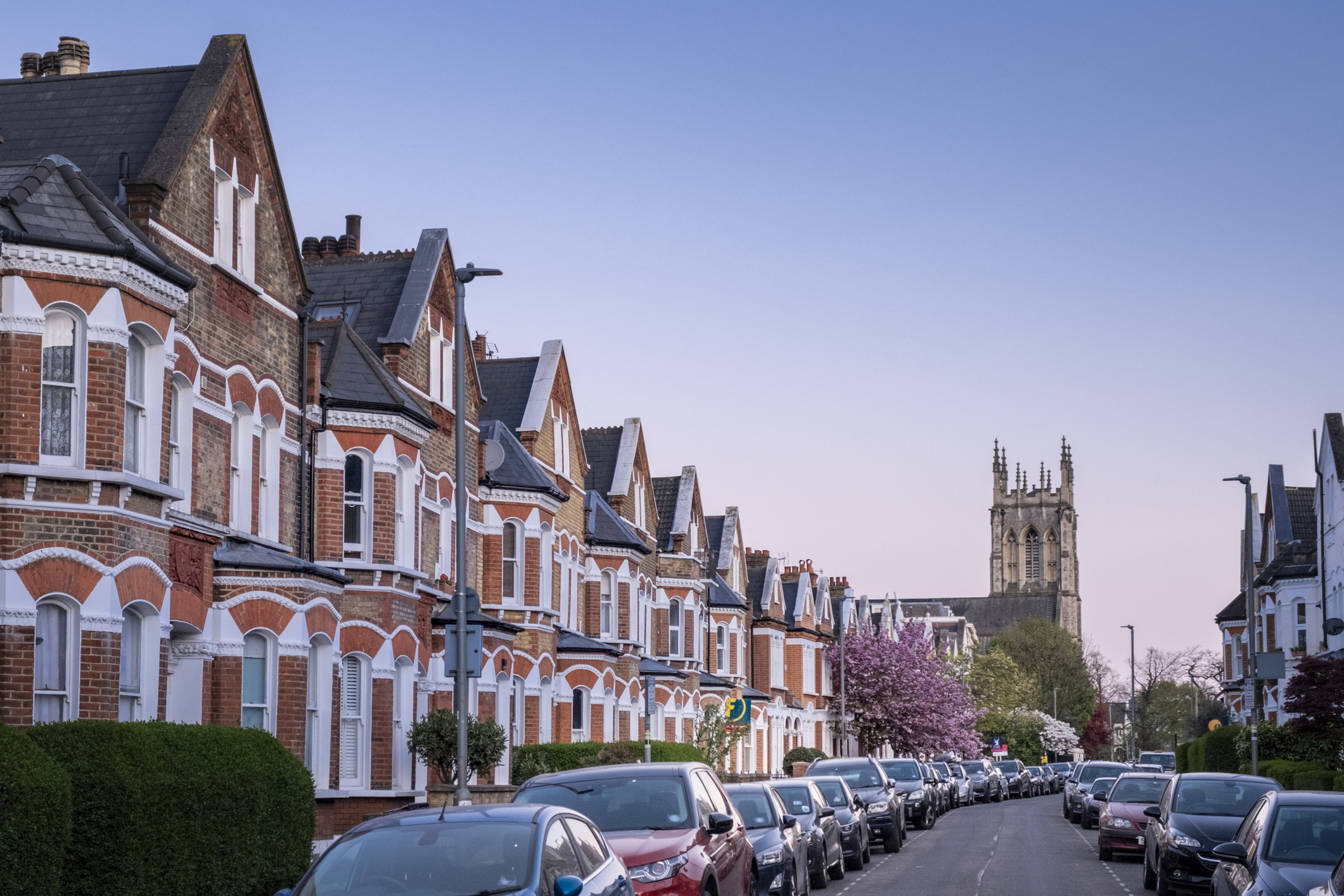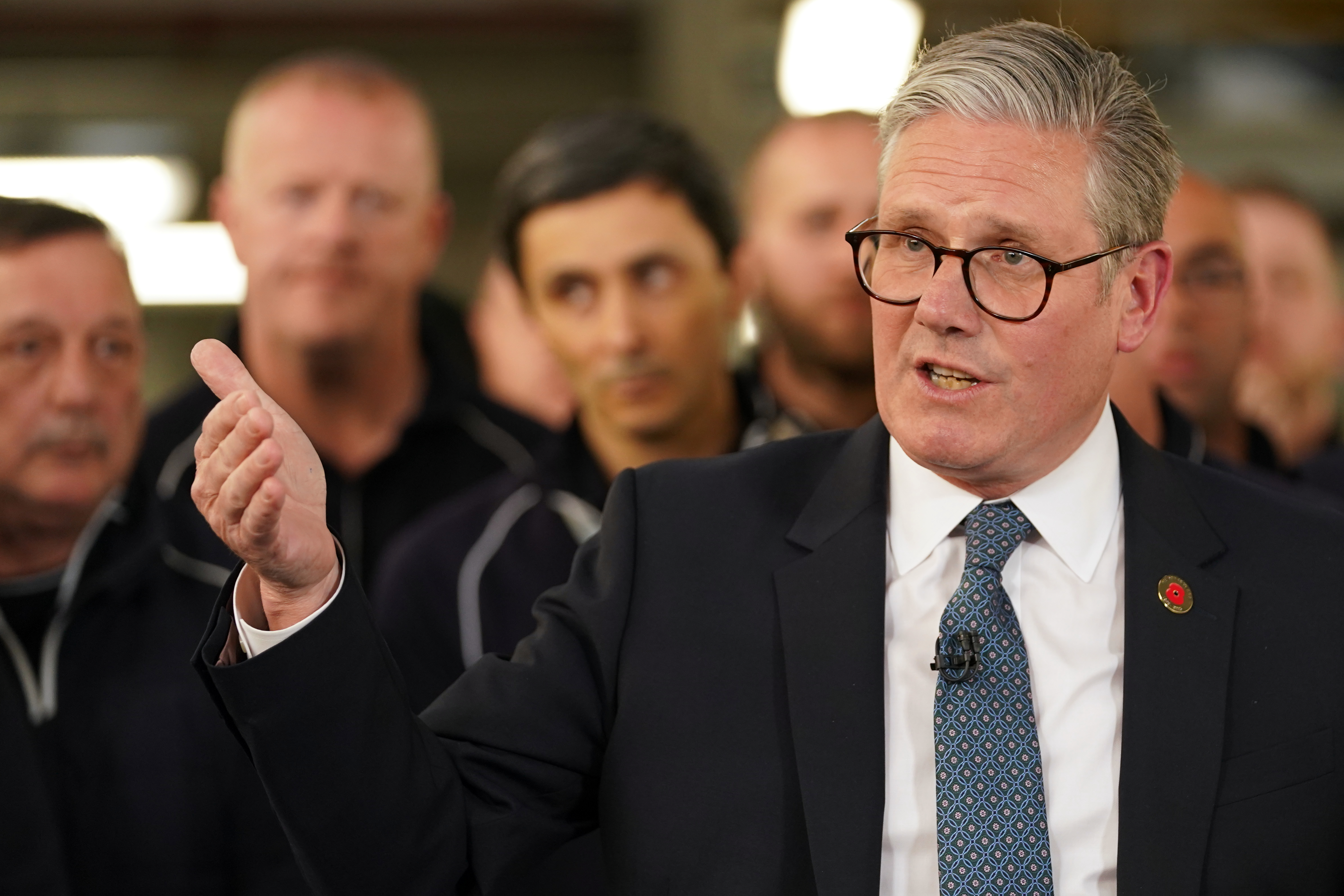What’s happening with UK house prices? Latest property market moves explained
House prices rose ahead of March's stamp duty deadline, but higher purchase costs and trade tariffs could dampen buyer demand going forward. Will house prices rise or fall in 2025?


The housing market has had a busy start to the year as buyers raced to beat changes to stamp duty thresholds at the end of March, but the outlook is uncertain now that property purchase costs are higher. Households could also be hit by Trump's trade tariffs.
The latest house price index data paints a mixed picture.
Official figures from HM Land Registry, published on 16 April, show house prices rose by 5.4% annually in February, up from 4.9% in January. This takes the average UK property to £268,000, around £13,000 higher than a year ago.
Subscribe to MoneyWeek
Subscribe to MoneyWeek today and get your first six magazine issues absolutely FREE

Sign up to Money Morning
Don't miss the latest investment and personal finances news, market analysis, plus money-saving tips with our free twice-daily newsletter
Don't miss the latest investment and personal finances news, market analysis, plus money-saving tips with our free twice-daily newsletter
Property site Rightmove also paints a resilient picture. It reported that asking prices increased 1.4% in the first few weeks of April – a larger-than-usual increase for this time of year.
This contradicts what other sources, based on more recent sales data, have been reporting. The latest data from Nationwide, Halifax and Zoopla points to a slowdown in the aftermath of the rush to beat the drop in stamp duty thresholds at the end of March.
The latest Nationwide House Price Index shows annual house price growth slowed in April to 3.4%, down from 3.9% in March. It also fell by 0.6% on a monthly basis, coinciding with lower stamp duty thresholds.
Halifax says annual house price growth held steady at 2.8% in March, but fell by 0.5% on a monthly basis.
Meanwhile, Zoopla reported that annual house price growth slowed to 1.6% in March, down from 1.8% in February.
“House price inflation is losing momentum as seasonal factors and growing economic uncertainty cools buyer demand, while supply continues to expand,” said Richard Donnell, executive director of research at Zoopla.
What's causing this inconsistency between the different house price indices?
HM Land Registry’s figures are published with a two-month time lag, which could help explain things. The latest report covers the year to February. The data could soften as it gets closer to the 31 March stamp duty deadline.
Another factor could be the stage at which the data is collected.
Rightmove's data is based on asking prices rather than prices at the mortgage-approval stage (when Halifax, Nationwide and Zoopla take some or all of their readings). Not every seller will be able to achieve the asking price they set.
Will stamp duty changes put the brakes on the housing market?
In recent months, experts have been warning of a potential slowdown in the property market after stamp duty thresholds dropped on 31 March.
First-time buyers now begin paying the controversial property tax on homes worth more than £300,000, down from £425,000 previously. Meanwhile, home movers have seen the tax-free threshold drop from £250,000 to £125,000.
“The market is likely to remain a little soft in the coming months since activity will have been brought forward to avoid the additional tax obligations – a pattern typically observed in the wake of the end of stamp duty holidays,” said Nationwide’s chief economist Robert Gardner.
Despite this, he expects activity to pick up as we progress through the summer.
What's happening with sold house prices?
Sold house prices are the most accurate indication of what is happening in the UK property market. The official figures published by HM Land Registry are the most authoritative source, however they come with a two-month time lag.
The 5.4% increase in the year to February, published in HM Land Registry’s latest report, is up from 4.9% in January. Prices held firm on a monthly basis in February, with growth coming in at 0%.
“This suggests a housing market that continues to defy expectations,” said Karen Noye, mortgage expert at wealth manager Quilter.
That said, the time lag associated with this index means you might need to consider it alongside other sources to get an indication of current market conditions – particularly in light of the stamp duty changes that took place at the end of March.
Major lenders like Halifax and Nationwide publish house price data with a shorter time lag, but this is based on the lender’s valuation at the mortgage-approval stage. This can differ from the actual sale price, but the idea is that it is near enough to the end of the home-selling process to offer a more realistic snapshot than initial asking prices.
Property website Zoopla also publishes a house price index, which uses sold prices, mortgage valuations and data for agreed sales. We look at which house price index is best in further detail in a separate article.
House price index | Report date | Monthly change | Annual change | Average UK house price |
Figures shown cover February. | +0% | +5.4% | £268,319 | |
Figures shown cover April. | -0.6% | +3.4% | £270,752 | |
Figures shown cover March. | -0.5% | +2.8% | £296,699 | |
Figures shown cover March. | +0.1% | +1.6% | £267,400 |
Regional house price variations
There are of course big regional variations, but using the “house prices in your area” report from the Office for National Statistics can help you understand how prices have changed in your borough or local authority area.
The latest report from HM Land Registry suggests prices are growing at the fastest rate in Northern Ireland (9% annually), followed by Scotland (5.7%), England (5.3%) and Wales (4.1%). Of the English regions, the North West is seeing the fastest growth (8%).
Meanwhile, London saw the lowest level of growth at 1.7%. Prices in London are particularly high, with the average house now costing almost £556,000. This suggests affordability limits have become stretched.

Affordability is stretched in London, meaning house prices are rising more slowly in the capital than elsewhere. Stamp duty changes are also likely to have the biggest impact in London and the South East.
Different property types are also seeing significant variations in price. Data from Zoopla shows the gap between the value of the average house and the average flat widened to a 30-year high earlier this year. As of January, a typical house was 67% more expensive than a flat.
“The search for space over the pandemic boosted demand for houses, while concerns over the running costs of flats, such as service charges and ground rents, has acted as a drag on flat prices. Building safety is another factor impacting demand for some recently-built flats,” Donnell explained.
Are property asking prices going up?
Asking prices are a useful barometer for market sentiment as it currently stands. These snapshots tend to be published only a few weeks after the data was recorded. The drawback is that asking prices don’t necessarily reflect the final sold price.
Rightmove data shows that asking prices increased by 1.4% on a monthly basis in the first few weeks of April. This is a larger-than-usual increase for this time of year, taking the average price to a record £377,182. On an annual basis, prices were up 1.3%.
“We’ve seen our first price record in nearly a year, despite the number of homes for sale being at a decade high,” said Colleen Babcock, property expert at Rightmove. Typically, you would expect an increase in housing supply to keep prices suppressed thanks to the laws of supply and demand.
Despite this, sellers should still be careful when deciding on an asking price. Not everyone will be able to achieve the asking price they set – and some sellers may have to adjust their expectations as buyers manage the additional costs associated with a higher stamp duty bill.
Will house prices rise in 2025?
Unlike Rightmove, Zoopla is already seeing signs of a slowdown, with house price growth easing from 1.8% in February to 1.6% in March. Zoopla is expecting growth to slow further to 1-1.5% over the coming months, as demand cools and supply expands.
“The weakening in buyer demand is partly seasonal, reflecting the Easter holidays, while global events and uncertainty over the economic impact of tariffs are likely to be causing hesitation amongst some buyers,” said Donnell. He suggests the stamp duty changes have also had an impact.
At the same time, the number of homes listed for sale in March was 15% higher than a year ago. With supply outstripping demand, it is “keeping house prices in check”.
Despite this, most experts believe house prices will end 2025 in positive territory. Both Zoopla and real estate consultancy Knight Frank have forecast 2.5% growth by the end of the year, while estate agent Savills has predicted 4%.
Naturally, there will be regional variations, with prices forecast to rise more rapidly in the north than the south.
House prices are expected to increase by 5% in the North West, the North East, Scotland, and Yorkshire and the Humber, according to Savills. Prices in the East of England and the South West are forecast to increase by 2.5%.
Will Trump’s tariffs impact house prices?
Some of the worst tariffs announced by Trump on 2 April have now been paused, but global growth is still expected to take a knock. Most countries have been slapped with a baseline tax of 10%, while China has been hit with an effective tariff rate of 145% across most goods.
The uncertainty has stocked fears of a global economic slowdown, which could hit homebuyer demand. The silver lining is that tariffs could force the Bank of England to cut interest rates more quickly, which could bring mortgage rates down.
Marc von Grundherr, director of Benham and Reeves, remains optimistic. “The property market remains fighting fit despite the wider economic turbulence faced on numerous fronts, not least from Trump and his tariff war, and whilst we may see the odd monthly adjustment, the real proof in the pudding is a robust level of annual growth.
“So whilst homeowners could find that the cost of some imported US items might rise should the UK government take a tit-for-tat approach towards Trump, it could result in a swifter reduction in mortgage rates if inflation remains stubbornly persistent and the Bank of England moves to curb it with a hastened schedule of interest rate cuts.”
Sign up for MoneyWeek's newsletters
Get the latest financial news, insights and expert analysis from our award-winning MoneyWeek team, to help you understand what really matters when it comes to your finances.

Katie has a background in investment writing and is interested in everything to do with personal finance, politics, and investing. She enjoys translating complex topics into easy-to-understand stories to help people make the most of their money.
Katie believes investing shouldn’t be complicated, and that demystifying it can help normal people improve their lives.
Before joining the MoneyWeek team, Katie worked as an investment writer at Invesco, a global asset management firm. She joined the company as a graduate in 2019. While there, she wrote about the global economy, bond markets, alternative investments and UK equities.
Katie loves writing and studied English at the University of Cambridge. Outside of work, she enjoys going to the theatre, reading novels, travelling and trying new restaurants with friends.
-
 UK-US trade deal announced: US cuts tariffs on UK car imports to 10%
UK-US trade deal announced: US cuts tariffs on UK car imports to 10%Keir Starmer and Donald Trump have announced a UK-US trade deal, but the US president has refused to lift baseline tariffs on most UK goods. What does it mean for the UK?
-
 How to use mid-caps to diversify from the US
How to use mid-caps to diversify from the USMedium sized companies are overlooked by investors but could offer an attractive ‘sweet spot’. We consider the case for mid-caps amid market volatility.